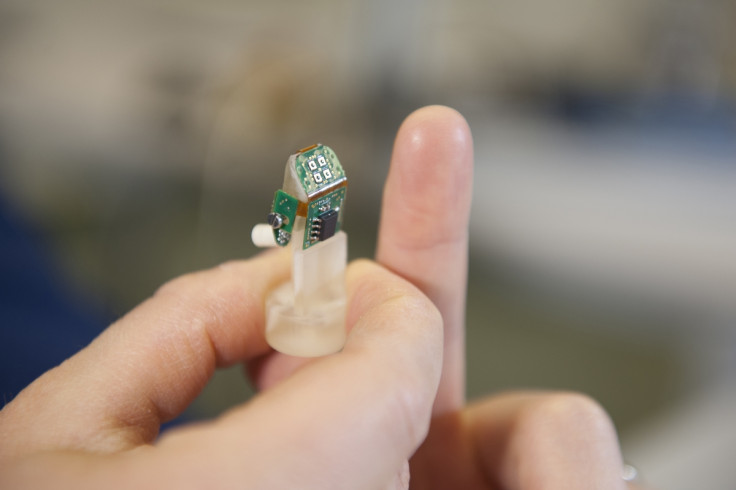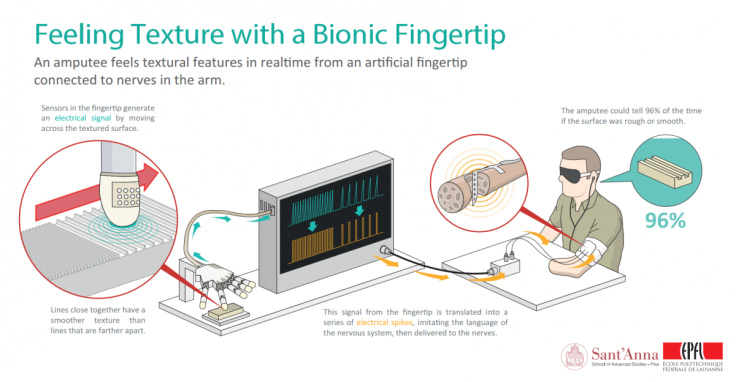Danish man becomes first amputee to feel textures through artificial fingertip

An amputee has become the first to feel roughness and smoothness by using an artificial fingertip. Nerves in the man's arm were connected to a robotic "fingertip", and a machine manually controlled its movement across four different types of stimuli.
The study, published in the journal eLife, shows scientists that the bionic fingertip worked in the same way as implanted electrodes. This opens the door to new ways for prosthetics to be developed, using wires attached to nerves.

"This study merges fundamental sciences and applied engineering," said Calogero Oddo, researcher working on the study. "It provides additional evidence that research in neuro-prosthetics can contribute to the neuroscience debate, specifically about the neuronal mechanisms of the human sense of touch."
The investigation
The study used an artificial fingertip – which was exactly the same size as the top half of any finger. Researchers, from École Polytechnique Fédérale de Lausanne, connected sensors to the outside of this fingertip, and attached it to nerves of four volunteers with full use of their arms, hands and fingers – i.e. non-amputees.
Researchers then used four different plastic sheets, each with a different engraved pattern, to test each volunteer's sense of touch when using the fingertip. As the sensors roll over the patterns, they translated the texture into electrical signals, which told the brain that they were feeling a certain roughness or smoothness.
The non-amputees were able to distinguish each separate texture 77% of the time.
Following these results, the scientists moved to testing their device on Danish volunteer Dennis Aabo Sørensen – an amputee with no hand. These results were more successful than the trials on the non-amputees.
"I still feel my missing hand, it is always clenched in a fist," said Sørensen. "I felt the texture sensations at the tip of the index finger of my phantom hand. The stimulation felt almost like what I would feel with my hand."
Sørensen managed to identify the roughness and smoothness of each pattern 96% of the time.
Scientists now hope to take this study further, and use this type of engineering in future prosthetics.
Oddo added: "It will also be translated to other applications such as artificial touch in robotics for surgery, rescue, and manufacturing."

© Copyright IBTimes 2025. All rights reserved.




















